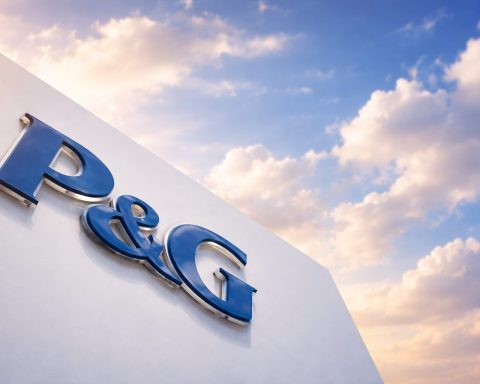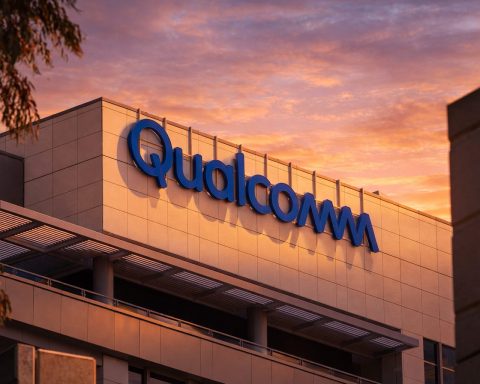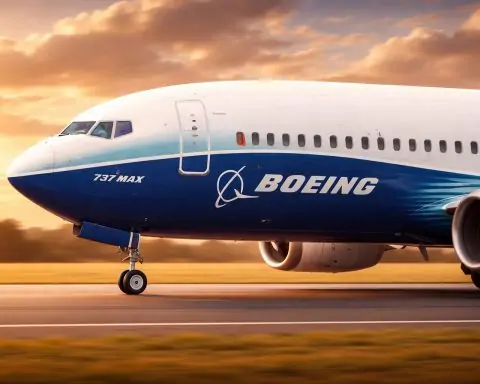- In June 2024, a team led by Japan’s NICT and Aston University achieved 402 Tbps over a single standard optical fiber using six wavelength bands (O, E, S, C, L, and U).
- In March 2024, the same international team reached 301 Tbps by extending into E-band and S-band with a custom amplifier for those bands.
- In July 2021, NICT researchers transmitted 319 Tbps over 3,001 km using a 4-core optical fiber with 552 channels across a 120 nm spectrum.
- In August 2020, University College London set a then-record of 178 Tbps using geometric shaping constellations.
- In April 2025, NICT with Sumitomo Electric demonstrated 1.02 Pbps (1,020 Tbps) over a 19-core fiber spanning 1,808 km with 180 wavelength channels per core and 16QAM modulation.
- AT&T markets a Dedicated Internet service with speeds up to 1 Tbps and a 100% uptime SLA for large enterprises.
- EPB in Chattanooga launched the first community-wide 25 Gbps service in 2022, priced at $12,500 per month for commercial customers and $1,500 per month for residential.
- Singapore’s Singtel offers a 10 Gbps residential plan at S$139 per month, often discounted to around S$65.
- Switzerland’s Salt Fiber provides a 10 Gbps symmetric home plan for CHF 49.95 per month (about $55).
- Samsung demonstrated 8.5 Gbps over 5G millimeter-wave by aggregating 800 MHz of spectrum.
Introduction
The pace of internet connectivity has accelerated to truly insane speeds, from experimental lab links transferring petabits per second to gigabit-grade services available in homes. Around the world, researchers and providers are continually breaking speed records and rolling out ultra-fast networks. This report explores the extremes of internet speed in three realms: cutting-edge laboratory experiments, top-tier commercial business services, and the fastest home broadband offerings by country. We also examine the technologies enabling these blistering speeds – from advanced fiber optics to 5G millimeter waves and low-Earth orbit satellites – and compare regional internet performance. Finally, we look ahead 5–10 years with expert insights on how internet speeds might evolve next.
Modern life is increasingly dependent on high-speed connectivity for everything from streaming 4K video and online gaming to remote work and cloud computing. Understanding where internet speeds stand today and where they’re headed can help consumers, businesses, and policymakers prepare for the next generation of digital experiences. In the sections below, we detail current speed records and services with comprehensive data points, including providers, speeds, costs, and the underlying technology. All information is drawn from authoritative and up-to-date sources (academic publications, industry reports, official ISP info, Speedtest data, etc.), with citations provided.
Record-Breaking Laboratory Internet Speeds
Internet speeds achieved in research laboratories far exceed anything seen in commercial networks. Over the past few years, scientists have set astonishing new records for data transmission rates, often using experimental fiber optic technologies and advanced modulation techniques. Here are some of the current records and milestones, with details on the institutions, dates, and technologies involved:
- 402 Terabits per second (Tbps) – June 2024: A team led by Japan’s National Institute of Information and Communications Technology (NICT) and Aston University (UK) achieved a world-record 402 Tbps data rate over a single, standard optical fiber [1]. This experiment, presented at OFC 2024, used an expanded optical spectrum (six wavelength bands) in the fiber (O, E, S, C, L, U bands) to carry vastly more data than usual (most fiber systems use only C/L bands) [2]. The researchers also developed novel optical amplifiers to support these extra bands, enabling a speed about 100 million times faster than a typical HD streaming requirement [3] [4].
- 301 Tbps (earlier record) – March 2024: The same international team had already broken records a few months prior, sending 301 Tbps through standard fiber [5]. This was accomplished by extending into new wavelength ranges (e.g. E-band and S-band) beyond the conventional bands, and by using a custom amplifier for those bands [6]. At ~301,000,000 Mbps, it was 4.5 million times faster than the average UK broadband speed at the time [7].
- 319 Tbps over 3,001 km – July 2021: Researchers at NICT in Japan shattered a distance record by transmitting 319 Tbps over a 4-core optical fiber across 3,001 km [8]. This used wavelength-division multiplexing (552 channels across 120 nm spectrum) and exemplified how multi-core fiber can multiply capacity. The 2021 result was about twice as fast as the previous 2020 record and was achieved with advanced fiber and laser modulation technologies [9].
- 178 Tbps – August 2020: A University College London (UCL) team set a then-record of 178 Tbps [10] by employing cutting-edge modulation (geometric shaping constellations) to efficiently pack data signals close to theoretical limits. This was notable at the time for being a fifth faster than any prior internet speed record [11], illustrating the rapid progress in this field.
- 1.02 Petabits per second (Pbps) – April 2025: In a recent breakthrough, NICT (Japan) together with Sumitomo Electric and others demonstrated 1.02 Pbps (1,020 Tbps) over a specially designed 19-core fiber [12] [13]. This “multi-core” fiber maintained the standard outer diameter (0.125 mm) so it’s compatible with existing cable infrastructure, but contains 19 distinct cores carrying parallel data streams. The team achieved this petabit-per-second speed over 1,808 km of fiber by using all cores plus 180 wavelength channels (C and L band in each core), each modulated with 16QAM signals [14]. This is the fastest data transmission ever recorded in any optical fiber to date [15]. It underscores that laboratory setups can now reach multi-million times the capacity of typical home broadband.
These “hero experiments” [16] showcase the upper limits of internet throughput when cost is no object and novel tech is used. They rely on advanced modulation and multiplexing (e.g. sending many wavelengths and using high-order QAM to encode more bits per symbol) and often on new fiber types (like multi-core or multi-mode fibers). Importantly, some experiments use “standard” fiber parameters, hinting that future commercial networks could adopt similar approaches without replacing all cable. While such lab speeds aren’t directly available to users, they foreshadow the capacities that backbone infrastructure could achieve in coming decades. As data demand grows exponentially, these research milestones are crucial steps toward scalable networks. For example, the 1.02 Pbps demo is seen as “a major step” toward ultra-high-capacity long-haul systems to meet future needs [17].
Fastest Commercial Internet Services for Businesses
Outside the lab, the fastest internet connections available to businesses are typically through dedicated fiber-optic services offered by telecom carriers or specialized providers. These enterprise-grade connections can reach extremely high speeds (tens or even hundreds of gigabits per second), albeit at very high cost, and are used by data centers, large corporations, research institutions, and other bandwidth-intensive operations. Below we highlight some of the fastest commercial internet services globally for business customers, including their providers, advertised speeds, and costs where known:
- Multi-Gig and Terabit Fiber for Enterprises: Major telecom carriers now offer dedicated internet access at speeds up to 100 Gbps or more on fiber backbones. For instance, Lumen Technologies (formerly CenturyLink) and Verizon advertise dedicated bandwidth up to 100 Gbps for enterprise customers [18] [19]. AT&T even markets an ultra-premium Dedicated Internet service with speeds “up to 1 Tbps” (1,000 Gbps) and a 100% uptime SLA for large businesses [20]. Such offerings are essentially custom fiber links for a single client – an AT&T spokesperson confirmed these 1 Tbps lines exist, representing the cutting edge of commercial ISP capacity [21]. It’s worth noting that these are not standard office broadband plans, but dedicated point-to-point fiber circuits, often used to connect enterprise hubs or data centers directly to the internet backbone.
- Examples of Top Business Speeds and Costs: The cost of these extreme-speed services is correspondingly high. Industry discussion indicates a 10 Gbps dedicated internet line in the U.S. typically costs on the order of $4,000–$9,000 per month (with multi-year contracts) [22], depending on location and build-out costs. One ISP in Los Angeles, Tierzero, publicly offers 10 Gbps fiber internet for $4,990/month [23]. At 100 Gbps, prices can reach the tens of thousands per month. A Reddit discussion of 10 Gigabit enterprise pricing corroborated that ~$5k/month is a common rate in the U.S. for 10G, and that significant install fees may apply if new fiber must be laid [24]. These costs put such speeds out of reach for small businesses, but large tech firms, financial institutions, and research networks routinely budget for them.
- Municipal Fiber Breakthrough – 25 Gbps in Chattanooga: Not all ultra-fast business internet requires a nationwide carrier. In Chattanooga, Tennessee (USA), the city-owned ISP EPB launched the first community-wide 25 Gigabit service in 2022 [25] [26]. This 25 Gbps symmetric fiber plan is available to any local business (or household) in EPB’s area. However, it doesn’t come cheap – the price is $12,500 per month for commercial customers (and $1,500/month for residential) [27]. EPB’s offering is based on Nokia’s 25G-PON technology and was rolled out as an investment in attracting tech industry and innovation to the region [28] [29]. The first 25 Gbps customer was a convention center aiming to host data-heavy events like e-sports competitions [30]. EPB’s case shows that localized initiatives can deliver world-leading speeds; Chattanooga had similarly pioneered gigabit fiber a decade earlier, and by 2015 offered 10 Gbps citywide [31].
- International Business ISP Offerings: Around the world, many fiber operators can provide businesses with multi-gigabit connectivity. In Europe, for example, Everstream (a business-only fiber provider) offers bespoke fiber links up to 100 Gbps in several countries [32]. In Asia, top carriers like NTT, Singtel, and others offer enterprise fiber plans ranging into the 10+ Gbps range on demand. Some national research and education networks (NRENs) and international backbone consortia operate even higher capacity links (40 G, 100 G, 400 G) between data centers and internet exchange points, though these are not “ISP services” in the retail sense but rather part of the internet’s core infrastructure.
In summary, the fastest commercial internet for businesses is almost exclusively delivered via fiber-optic cables, often as dedicated internet access (DIA) circuits. While typical small-business internet plans (cable or fiber) might top out at 1–2 Gbps, enterprises with sufficient budget can purchase virtually any bandwidth they require. Telecom providers will light fiber strands with the necessary equipment to scale from 10 Gbps up to 100 Gbps or beyond. AT&T’s 1 Tbps offering shows the extreme end, essentially leveraging the same optical transport technologies used in the internet backbone for a single client [33]. These ultra-fast links are critical for applications like cloud computing, high-frequency trading, scientific research data transfer, and massive content delivery. Cost remains a major limiting factor – the fastest business internet is readily available if you can pay for it, but the price-to-performance is only justified for specialized needs. Over time, as technology advances and demand grows, we can expect multi-gig and even 10+ gig speeds to become more affordable for a wider range of businesses.
Fastest Home Internet Services by Country
When it comes to home (consumer) internet, we have entered the era of multi-gigabit broadband in some places. Many countries now boast residential fiber offerings with 1 Gbps speeds, and a growing number are pushing into the 2–10 Gbps range for home users. In rare cases, speeds above 10 Gbps are even being offered to households. Below, we provide a country-by-country roundup of some of the fastest home internet services available, including typical download/upload speeds, the ISP offering the service, and approximate prices. This highlights how far consumer internet has come – and the considerable variation across different markets.
To make the comparison easier, the table below lists a selection of countries known for having top-tier home internet speeds, along with their fastest commercially available residential plan:
| Country | Provider / Plan | Max Speed (Down/Up) | Monthly Price (Approx.) |
|---|---|---|---|
| United States | EPB (Chattanooga) – 25 Gig Fiber | 25 Gbps symmetrical | $1,500 (residential) [34] |
| Singapore | Singtel – 10Gbps Enhanced Fiber | 10 Gbps symmetrical | S$139 (often discounted to ~S$65) [35] |
| Japan | NTT (Docomo Hikari Cross) – 10 Giga | 10 Gbps (down/up) | ¥6,160 (~$55) [36] |
| South Korea | KT – 10 GiGA Internet | 10 Gbps download (sym. options) | ₩110,000 (~$96) [37] |
| Switzerland | Salt Fiber – 10 Gbit/s Home | 10 Gbps symmetrical | CHF 49.95 (~$55) [38] |
| Hong Kong | HKT (Netvigator) – 10G FTTH Plan | 10 Gbps symmetrical | HK$2,888 (~US$370) [39] |
| Qatar | Vodafone Qatar – GigaHome 25 Gbps | 25 Gbps (fiber-to-the-home) | QAR 6,500 (~$1,780) [40] (est.) |
| France | Free (Freebox Delta) – Fiber 10G | 8–10 Gbps down / 700 Mbps up | €49.99 (~$55) (with bundle) [41] [42] |
| Canada | Bell Fibe – Gigabit 8.0 | 8 Gbps download / 8 Gbps upload | C$135 (~$100) (estimated) |
| UAE | Etisalat eLife – Quantum | 2 Gbps down / 200 Mbps up (fastest plan) | AED 2,999 (~$817) (estimated) |
Table: Examples of the fastest advertised residential broadband plans in various countries (speeds and prices as of 2024–2025). Many are fiber-to-the-home (FTTH) services with symmetric upload/download speeds, except where noted. Prices are approximate and may require bundles or long-term contracts.
A few observations from the table and other country data:
- United States: The absolute fastest home internet in the U.S. comes from niche municipal providers like EPB in Chattanooga, offering up to 25 Gbps [43]. However, such extreme speeds are very expensive and not widespread. More commonly, premium fiber ISPs (Verizon Fios, Google Fiber, AT&T Fiber, etc.) have introduced multi-gigabit home plans. For example, Google Fiber’s top residential tier is 8 Gbps symmetric for $150/month [44]. AT&T and Frontier offer 5 Gbps home fiber in select areas (around $180/month for AT&T Fiber 5Gig). Cable companies are a bit behind on speed – Xfinity and Spectrum’s fastest residential tiers are typically 1.2 Gbps (download) on DOCSIS cable, although Comcast has tested higher via new DOCSIS 4.0 tech. In some innovative US markets, 10 Gbps is emerging (e.g. Sonic ISP in California has a 10 Gbps home fiber plan, as does US Internet in Minneapolis), but these are exceptions. Broadly, American consumers in major cities can get 1–2 Gbps fairly readily now, with 5+ Gbps being a cutting-edge luxury.
- Asia (Singapore, Japan, South Korea, Hong Kong): Asian tigers are known for blazing internet, and indeed Singapore often leads the world in average broadband speeds. Singtel and others offer 10 Gbps FTTH plans at relatively affordable prices (S$60–$80 range) [45]. In Japan, the main fiber providers (NTT’s Flets Hikari Cross, KDDI, etc.) rolled out 10 Gbps services in recent years; these typically cost around ¥6,000–¥7,000/month [46], only slightly more than a 1 Gbps line, making them popular with tech enthusiasts. South Korea launched limited 10 Gbps home broadband in 2018 – KT’s 10 GiGA service costs ₩110k/month [47] – but uptake was initially slow (fewer than 0.1% of subscribers) due to lack of consumer need and hardware limits [48] [49]. Still, Korea has nearly universal gigabit availability, and the government targeted 50% of users on 10 Gbps by 2022 [50]. Hong Kong has multiple ISPs (HKT, HKBN, HGC) offering 10 Gbps FTTH for the luxury market, though one top plan was priced at HK$2,888 ($370) a month [51], making it a niche product. It’s notable that in many Asian cities, apartment buildings are fiber-wired, enabling relatively cheap gigabit service – often $30 or less for 1 Gbps – while the multi-gig plans serve as a premium differentiator for power users.
- Europe: Europe’s fastest home internet is often found in countries with widespread fiber deployment and competitive ISP markets. For example, Switzerland has the remarkable Salt Fiber plan: 10 Gbps symmetric for just CHF 49.95 (~$55) [52]. This low price shocked observers and prompted incumbents like Swisscom to drop their prices [53]. In France, the ISP Free introduced a 10 Gbps-capable “Freebox” in 2018 (advertised 8 Gbps download, 700 Mbps upload due to port limits) as part of a bundle €50 [54]. Nordic countries (Sweden, Norway, Denmark) also have some 10G offerings via municipal fiber networks, though 1–2 Gbps is more common. Eastern Europe has long punched above its weight in speeds – Romania, for instance, has very high average speeds and cheap gigabit plans (€10–€15 for 1 Gbps in cities) thanks to extensive fiber. However, multi-gig plans are not yet prevalent there. Overall, Europe’s gigabit coverage is expanding quickly, and many countries now report average speeds over 200 Mbps (for example, France’s median fixed speed is ~224 Mbps [55]). The EU’s goal for “Gigabit society” is pushing operators toward 10 Gbps-capable XGS-PON fiber tech in the coming years.
- Middle East: Gulf countries like Qatar, UAE, Saudi Arabia have invested in fiber and show up high on speed rankings (often due to small area and new infrastructure). Qatar’s Ooredoo and Vodafone have aggressively launched gigabit and multi-gig packages – Vodafone Qatar’s new GigaHome range even includes a 25 Gbps home plan, reportedly the first of its kind in the Middle East [56] [57]. That 25G plan’s price (~QAR 6,500) is extremely steep and likely aimed at VIP customers [58]. The UAE (Etisalat eLife) offers up to 2 Gbps for consumers (at very high cost), and average speeds there are bolstered by many 500 Mbps–1 Gbps subscriptions. Israel recently launched 10 Gbps fiber options as well, as its nationwide fiber build completes.
- Oceania:Australia and New Zealand have historically lagged a bit due to geography and legacy infrastructure. But with fiber now deployed (the NBN in Australia and UFB in NZ), speeds are climbing. In New Zealand, Chorus offers 4 Gbps and even 8 Gbps plans (XGS-PON based) in select areas, and median speeds in NZ are around 175 Mbps [59]. Australia’s NBN currently tops out at 1 Gbps for most consumers, although trials of 2–10 Gbps are underway for future upgrades. As a result, Oceania’s fastest home speeds still trail Asia/Europe, but the gap is closing.
- Africa and South Asia: These regions generally have much lower fixed broadband speeds and limited fiber-to-home deployment. South Africa is a bright spot in Africa – fiber ISPs there offer up to 1 Gbps plans to urban homes, and median speeds have risen (e.g. ~47 Mbps as of late 2022). A few countries like Nigeria, Kenya, Egypt also now have some fiber offerings (often max 100–200 Mbps for homes). But many African and South Asian countries rely heavily on mobile networks or older DSL, so their top available home speeds might only be tens of Mbps. For instance, Ethiopia, Somalia, Yemen and others have median speeds below 5 Mbps [60]. The digital divide is stark: while a Swiss home can get 10,000 Mbps, some countries struggle to provide 10 Mbps. That said, initiatives are ongoing to lay fiber in developing regions, and novel solutions (like LEO satellite broadband) are also bringing higher speeds to remote areas (discussed more below).
It’s important to note that real-world speeds may differ from advertised maxima. A 10 Gbps subscription doesn’t guarantee one can actually download at 10 Gbps from every server – many factors (home Wi-Fi limitations, server capacity, interconnection bottlenecks) affect throughput. Indeed, a Swiss blogger pointed out that even with 10 Gbps fiber, you rarely hit full speed because many internet sites or services cap out at lower rates [61] [62]. Nonetheless, having a multi-gig pipe ensures that local access is not the bottleneck and allows numerous devices/streams to share huge bandwidth.
Overall, the fastest home internet services are enabled by fiber-optic technology, often using next-gen passive optical network standards like XGS-PON (10 Gbps) or upcoming 25G-PON. A few providers (like Vodafone in Qatar) are even skipping directly to 25 Gbps for future-proofing [63] [64]. The competition for “fastest ISP” has led to marketing one-upmanship – for example, after EPB’s 25G launch, a regional ISP in Florida (USA) announced plans for “25G to select neighborhoods”. As more ISPs upgrade their networks, 10 Gigabit home internet could gradually move from exotic to mainstream in tech-forward cities over the next decade. For now, however, such speeds remain a novelty for most consumers, with cost and practicality limiting adoption to enthusiasts and professionals who truly need it.
Technologies Enabling These High Speeds
Achieving the extreme internet speeds discussed above – whether in labs or in commercial networks – depends on advanced technologies in data transmission and networking. From the physics of fiber optics to innovative wireless spectrum usage, engineers have pushed the boundaries to carry more bits, faster, over various mediums. In this section, we delve into the key technologies that make multi-gigabit and terabit-level speeds possible:
- Fiber Optics and Next-Gen Optical Fiber: Fiber-optic cable is the workhorse of high-speed internet. It carries data as pulses of light through strands of glass, offering massive bandwidth and low signal loss over distance. The fastest lab experiments leverage improvements in fiber optics – for example, using multiple cores or modes within one fiber, and expanding into new wavelength bands. Standard single-mode fiber typically uses two bands (C and L), but researchers broke records by using six bands simultaneously, greatly increasing capacity [65]. Similarly, multi-core fibers (with several light paths in one fiber) have reached over a petabit per second [66]. Commercially, modern fiber access networks use Passive Optical Network (PON) standards: GPON (2.5 Gbps), XGS-PON (10 Gbps symmetric), and upcoming 25G/50G PON. These technologies let fiber-to-the-home deliver multi-gigabit rates by sharing wavelengths among users. Fiber’s potential is tremendous – with advanced modulation (e.g. 16-QAM, 64-QAM on optical carriers) and dense wavelength-division multiplexing (DWDM), a single fiber pair in the core network today routinely carries terabits per second. As one Aston University researcher noted, fiber’s capacity can be continuously boosted by widening spectrum and new amplification methods, without needing fundamentally new cables [67] [68]. This is why fiber is seen as the most “future-proof” physical medium for internet connectivity.
- Advanced Modulation and Signal Processing: Pushing more data through a given channel requires sophisticated modulation techniques. In optical communications, this means encoding more bits per light pulse via amplitude/phase changes (QAM), and using coherent detection with digital signal processing (DSP) to recover faint, high-speed signals. The lab feats (178 Tbps, 319 Tbps, etc.) employed advanced modulation formats and super-channel concepts – essentially combining many signals in parallel and using algorithms to sort them out at the receiver. Even in consumer tech, advanced modulation is key: for example, cable internet (DOCSIS) improved speeds by moving to 4096-QAM, and 5G wireless uses up to 256-QAM in downlink. These higher-order QAM schemes pack more bits into each symbol but demand higher signal quality (SNR). Error-correcting codes and MIMO (multiple-input multiple-output) processing further boost throughput by harnessing multiple spatial streams or correcting errors from noisy channels. A clear example is the Samsung 5G mmWave demo, which used 800 MHz of spectrum with MU-MIMO to reach 8.5 Gbps – essentially splitting data across multiple antennas and streams [69] [70]. In summary, advanced modulation and DSP techniques allow networks to use available spectrum more efficiently, which is essential for hitting gigabit and above rates in any medium (fiber, copper, or wireless).
- Millimeter Wave 5G and Beyond: On the wireless front, 5G mobile networks introduced the use of millimeter-wave (mmWave) frequencies (around 24–mm to 40 GHz and above) to achieve multi-gigabit speeds. mmWave signals have enormous bandwidth available – for instance, 5G can allocate blocks up to 800 MHz wide (vs. 20 MHz typical in 4G). In ideal conditions, mmWave 5G can deliver 1–3 Gbps to a smartphone and even higher to fixed receivers. For example, Verizon’s 5G Ultra Wideband (mmWave) often hits ~1.5–2 Gbps in downtown test sites. In a controlled trial, Samsung demonstrated 8.5 Gbps over 5G by aggregating mmWave spectrum and using multiple devices [71]. The catch: mmWave has limited range and struggles with walls/obstacles, so deployment is so far limited to small cells in dense urban spots or fixed wireless access to homes in line-of-sight. Nonetheless, mmWave is a key technology enabling wireless gigabit-class internet, complementing fiber in areas where running cables is difficult. Future 6G research is looking at even higher frequencies (sub-THz bands) which could support tens or hundreds of Gbps wirelessly, although those will have even shorter range. As Ericsson notes, mmWave 5G offers “multi-gigabit speeds and capacity” in areas like stadiums and city centers [72], showcasing wireless’ role in the ultra-fast internet ecosystem.
- Low-Earth Orbit (LEO) Satellite Networks: While fiber and 5G dominate in capacity, LEO satellites represent a new frontier in expanding high-speed internet coverage. Systems like SpaceX’s Starlink, OneWeb, and upcoming Amazon Kuiper use constellations of satellites orbiting ~500 km above Earth to provide broadband with much lower latency than traditional geostationary sats. Starlink’s service currently delivers around 50–200 Mbps to users on average [73] [74], with latency ~20–40 ms – a huge improvement over previous satellite internet. Starlink promises eventual speeds up to 300 Mbps per user as the constellation and ground infrastructure grow [75]. It’s also testing “Starlink 2.0” satellites with laser links and more capacity, which could push speeds higher. OneWeb has focused more on serving remote enterprise/telecom needs, with links that can backhaul 3G/4G to rural areas at hundreds of Mbps. In terms of enabling technology, LEO networks use phased-array antennas and operate in high-frequency Ku/Ka bands (around 12–40 GHz) with advanced beamforming to track satellites. While a single LEO user link is not gigabit-level yet, the aggregate throughput of these systems is significant (Starlink’s total constellation throughput is several Tbps). Also, new V-band and optical inter-satellite links being deployed could eventually allow >500 Mbps to individual users in ideal conditions. LEO satellites are enabling relatively fast internet in places far from fiber or cell towers – from mid-ocean ships to rural villages – thus globally raising the baseline of “available” speeds. They fill an important gap in the high-speed puzzle, even if they don’t rival fiber’s top speeds.
- High-Capacity Core Networks and Modems: Another technology aspect is the infrastructure that supports and distributes these speeds. In the internet core and data centers, network switches and routers have rapidly scaled up. We now have standard Ethernet interfaces at 100 Gbps, 400 Gbps, and 800 Gbps, used by big cloud providers and carriers. Experiments are underway for 1.6 Tbps Ethernet. These high-speed ports feed into fiber optic transmission systems that may carry multiple such channels over long distances. Technologies like flex-grid ROADMs (reconfigurable optical add-drop multiplexers) and optical superchannels allow efficient use of fiber spectrum, dividing terabits of data across colors of light. On the consumer end, new modems and Wi-Fi standards are enabling multi-gigabit use in home networks. For example, Wi-Fi 6E/7 can exceed 1 Gbps real throughput (Wi-Fi 7 aims for 5–10 Gbps in ideal conditions), ensuring that if your home has a 5–10 Gbps fiber drop, your wireless devices can actually utilize it (with a compatible router). Cable broadband is advancing via DOCSIS 4.0, which the cable industry markets under the banner of “10G”. DOCSIS 4.0 can technically support up to ~10 Gbps downstream and ~6 Gbps upstream over coaxial cable by using expanded spectrum and smarter signal processing [76]. Comcast recently tested the first live DOCSIS 4.0 10G connection, achieving multigigabit symmetric speeds on their hybrid fiber-coax network [77]. Thus, a combination of improved core capacity, new last-mile technologies, and better consumer hardware all contribute to the realization of ultra-fast internet in practice.
In essence, fiber-optic innovation (wider spectra, more cores, better modulation) is the foundation of the fastest speeds, as evidenced by lab records and the spread of FTTH networks. Wireless advancements (5G/6G, satellites) extend high speeds to mobile and remote contexts, though often at lower absolute rates than fiber. And underlying it all is a progression in network engineering – from terabit-class routing equipment to smarter modulation/coding – that squeezes more performance out of every link. The synergy of these technologies is what makes it possible to talk about home users having multi-gigabit service and researchers dreaming of petabit networks. Each technology addresses different challenges (capacity, distance, mobility, ubiquity), and together they are pushing the global internet toward faster, more accessible connections.
Global Internet Speed Comparison by Region
Internet speeds have improved worldwide, but not evenly – there are clear regional differences in both the average speeds people experience and the peak speeds available. Here we compare internet speeds across major regions (Asia, Europe, North America, etc.), highlighting which areas lead and which lag, based on recent data:
- Asia: Asia includes some of the fastest internet countries on Earth as well as some of the slowest. On the high end, advanced economies in East Asia and the Pacific have tremendous speeds. For example, Singapore consistently ranks #1 globally for fixed broadband – as of March 2025, Singapore’s average download speed was about 345 Mbps [78]. Hong Kong (305 Mbps) and Japan (~212 Mbps median) [79], along with South Korea (~193 Mbps median) [80], all benefit from near-ubiquitous fiber and cable networks. Several Middle Eastern/West Asian countries also appear in top rankings; the United Arab Emirates and Qatar, for instance, have median speeds around 300 Mbps [81], thanks to state-of-the-art fiber deployments (UAE’s Etisalat and du, Qatar’s Ooredoo, etc.). On the other hand, parts of South and Southeast Asia have much lower speeds – large countries like India (median ~60 Mbps) and Indonesia (~30 Mbps) have improved with 4G expansion and some fiber, but still trail far behind. And at the bottom, war-torn or less developed Asian nations like Afghanistan or Yemen report median broadband around 3–8 Mbps [82]. So, Asia spans the full spectrum. Nonetheless, in terms of peak offerings, Asia is a leader – multiple countries offer 10 Gbps home plans and even 50% of South Koreans were expected to have 10G by 2022 [83]. The region’s wealthy tech hubs drive the global frontier of speed, while efforts continue to bring the rest of the region up to par.
- Europe: Europe as a region has broadly high internet speeds, especially in Western and Northern Europe. Many EU countries have aggressive fiber rollout programs. According to Speedtest data (Jan 2025), France had a median fixed download of ~287 Mbps [84], placing it among the top countries (French ISPs like Free and Orange have driven fiber deep into cities). The Nordics and Benelux also shine (e.g. Denmark ~248 Mbps, Iceland ~282 Mbps) [85]. Smaller states like Monaco and Liechtenstein often top the charts due to easy infrastructure and high GDP – Monaco was #1 in 2021 with ~226 Mbps average [86]. Even historically slower European countries are catching up: for instance, Spain and Portugal now see medians around 200 Mbps [87] after extensive fiber deployment, and Romania (long known for cheap fast internet in urban areas) reports ~238 Mbps median [88]. Europe’s regional average is pulled up by these high performers. That said, a few parts of Europe lag, notably in some rural areas of Eastern/Southern Europe where DSL is still phasing out – countries like Albania or Bosnia have far lower averages (tens of Mbps). But overall, Europe is second only to advanced Asia in speed rankings. Importantly, the gap between Europe and the very top (Singapore, etc.) is not huge – in fact, Europe held 5 of the top 10 spots for median broadband in 2024 [89]. This reflects strong competition and investment in fiber/cable networks across EU and neighboring nations.
- North America: North America’s speeds are high but not record-breaking on average. The United States has a wide range – urban areas often have gigabit options, but rural parts may still be on slow DSL or wireless. The U.S. median download was around 242 Mbps in 2024 [90], placing it roughly 5th globally by that metric. Canada is similar, with a median ~232 Mbps [91], thanks to cable and fiber in its populous areas. Both countries have seen rising averages as cable DOCSIS 3.1 (1 Gbps capability) and fiber (from telcos like AT&T, Verizon, Bell Canada) expand. However, North America hasn’t leapfrogged to 10 Gbps home service as quickly as Asia/Europe in general – it’s happening in pockets (a few cities), but not widespread. One reason average U.S. speeds aren’t #1 is the digital divide – some Americans still only have 10–50 Mbps options, which drags the national median. Meanwhile, Mexico lags further (median ~60–70 Mbps), though improving with fiber rollouts by Telmex and others. In summary, North America has solid internet speeds (the U.S. and Canada both in the global top ~15 for broadband), but the region as a whole is a step behind the very fastest countries. It’s telling that an American city (Chattanooga) can have 25 Gbps available, yet the U.S. average is a fraction of that – highlighting disparities in deployment.
- Latin America: Latin America has made strides recently, with a few countries now above the 200 Mbps mark. Chile stands out – it has invested heavily in fiber and had a median speed around 266 Mbps (one of the top worldwide) [92]. Chile’s status owes to competition and fiber ISPs covering major cities. Panama and Brazil also showed significant improvements (Panama ~169 Mbps median [93], Brazil ~186 Mbps [94]), partly due to cable upgrades and fiber to the home in urban centers. However, other large countries like Argentina, Colombia, Peru range from ~50 to 150 Mbps averages – decent, but not world-leading. The region’s lower-income nations, especially in Central America or the Caribbean, often have averages below 30 Mbps. Overall, Latin America’s regional average is pulled upward by a few overachievers but still trails North America/Europe. The trend is positive though: fiber deployments by companies like Claro, Telefónica, and local ISPs are rapidly increasing capacity. For instance, several providers in Brazil and Mexico now offer 1–2 Gbps home plans, something unheard of just a few years ago. Within 5 years, Latin America could close much of the gap.
- Africa: Africa unfortunately remains the region with the slowest internet speeds on average. A majority of countries in Sub-Saharan Africa have average fixed broadband speeds under 25 Mbps, and many under 10 Mbps [95]. The reasons include low fiber penetration, reliance on older DSL or cellular networks for home access, and less competition. South Africa is a relative leader – it has a growing fiber market and median speeds in the dozens of Mbps (and select users on 1 Gbps). Kenya, Nigeria, Ghana, Morocco, Egypt are other nations where undersea cables and internal fiber backbones have boosted speeds somewhat (often 20–50 Mbps range medians). But in many parts of Africa, fixed broadband is sparse; people rely on mobile 4G which might give only a few Mbps. War-torn and very poor countries (like Eritrea, Sudan, DR Congo) register in the single-digit Mbps [96] [97]. The bright side is that investment is happening – new submarine cables (e.g., 2Africa, Equiano) promise to greatly increase capacity landing in Africa, and local ISPs are extending fiber in capitals. Also, 4G and 5G mobile can deliver decent speeds where fiber to home is not viable. We are seeing early examples: by 2022, South Africa had some 5G FWA users getting hundreds of Mbps. So, Africa’s speeds will improve, but it starts from a lower base. As of mid-2020s, the continent as a whole has the lowest regional average speed.
- Oceania: Oceania (mainly Australia and New Zealand, plus Pacific islands) falls somewhere in the middle. Australia underwent the National Broadband Network (NBN) project which replaced much of its aging DSL network with a mix of fiber, coax, and fixed wireless. This lifted Australia’s average speeds significantly – currently, Australia’s fixed broadband median is around ~100 Mbps (it was ~43 Mbps in 2019). New Zealand is ahead of Australia; thanks to its UFB fiber program, NZ’s median speed is ~175 Mbps [98]. New Zealand often ranks within the global top 20, whereas Australia lags slightly behind in rankings (often ~50th, due in part to many on fixed wireless or older fiber-to-the-node systems). The Pacific Island nations are typically much slower (often reliant on satellite or limited submarine links). For example, Fiji or Samoa might have average speeds under 20 Mbps, though they are improving with new cables. In summary, Oceania’s developed parts have good broadband (gigabit plans are available to many NZ households and some Australian ones), but the region’s overall speeds don’t match the best of Asia/Europe yet. Australia in particular has room for improvement – the government is now upgrading the NBN again to expand full fiber and allow gigabit tiers more widely, aiming to catch up.
To put it all together, as of 2024/2025 data, the global average fixed broadband speed is around 100 Mbps (download) [99], but this average masks the large variance between regions. Asia (led by city-states and Gulf countries) and Europe (EU countries) populate most of the top slots, typically showing triple-digit Mbps performance. North America is not far behind in absolute terms, though its huge geographic and demographic diversity lowers the median slightly compared to the very top countries. Latin America is climbing upwards, with a few nations now comparable to European speeds. Oceania is a bit split – New Zealand performing very well, Australia moderate. And Africa is largely still below the global average, often by a big margin.
This regional comparison underlines that geography, infrastructure investment, and policy matter greatly. Smaller and wealthier places can upgrade networks faster (e.g., UAE’s mobile networks average ~399 Mbps on 5G, highest globally [100]). Larger or poorer regions face more challenges. However, the overall trend is upward everywhere. The gap between the fastest and slowest regions, while still significant, is slowly narrowing as technology costs drop and emerging markets leapfrog with new infrastructure (for instance, going straight to fiber or 5G). International initiatives to improve connectivity (like the UN’s Broadband Commission goals) are also pushing for more uniform high-speed access. In a decade, we might see today’s top speeds more evenly distributed worldwide – but for now, your internet experience is still heavily influenced by where you live.
Trends and Forecasts for the Next 5–10 Years
Looking ahead, internet speeds are expected to continue their dramatic rise. The next 5 to 10 years will likely bring multi-gigabit internet into the mainstream for many consumers and even more staggering capacities in core networks. Below are some key trends and expert forecasts regarding the evolution of internet speeds and infrastructure through the end of this decade and into the 2030s:
- Gigabit and Multi-Gigabit Broadband Become Commonplace: Over the coming few years, we can expect gigabit-level speeds to become standard offerings in much of the developed world. Many cable companies and fiber ISPs have roadmaps to ensure 1 Gbps or higher plans are widely available by 2030. In the US, for example, cable providers under the “10G” initiative plan to use DOCSIS 4.0 to deliver multi-gigabit downloads and significantly improved uploads over existing coax networks [101]. Field trials are already showing symmetrical multi-gig speeds on cable [102]. On the fiber side, telcos are upgrading from GPON to XGS-PON (10 Gbps) and beyond. Industry analysts predicted “wide-spread 10 Gbps consumer products” rolling out in the early 2020s and gaining traction mid-decade [103] – indeed, by 2024, 10 Gig home offerings exist in several countries. By 2030, it’s likely that even higher PON standards (25G-PON, 50G-PON) will start seeing deployment for premium users or to support network backhaul [104]. The CableLabs roadmap suggests that by the late 2020s, cable and fiber will both be capable of 10 Gbps to end-users, making the term “broadband” truly redefined (compare to the mere 25 Mbps US definition from a decade ago).
- Wireless Advances: 5G Expansion and 6G on the Horizon: On the mobile front, the next 5 years will complete the global rollout of 5G, including more mmWave deployment and 5G-Advanced features that improve capacity. By 2025, 5G is expected to support average mobile speeds of 150+ Mbps in many countries, with peak rates in the multi-gigabit range for users in mmWave zones [105]. Looking further, the development of 6G is already underway, targeting a 2030 timeframe for initial deployment [106]. Experts predict that 6G could provide wireless speeds of 10 Gbps up to 100 Gbps for users in urban areas with dense small cells [107]. In fact, research aims for 6G to reach 1 Tbps under ideal conditions [108] [109], using sub-THz frequencies and enormous antenna arrays. A senior IEEE fellow was quoted saying “6G is expected to offer data rates of up to 1 Tbps, 1000 times faster than 5G” [110]. Early trials are promising: AT&T’s 6G wireless testbed already demonstrated over 1 Tbps in a controlled setting [111]. While those kinds of speeds won’t be what a typical phone user sees, by 2030 we might realistically have smartphones capable of tens of gigabits per second under optimal conditions, and ubiquitous mobile connectivity in the 1–5 Gbps range in developed markets [112]. This will enable things like untethered AR/VR, 8K mobile streaming, cloud gaming with minimal latency, etc. Also, Wi-Fi 7 (the next Wi-Fi standard, around 2024 rollout) supports up to 30 Gbps theoretical throughput, ensuring local wireless networks at home don’t become the bottleneck as internet WAN speeds increase.
- Satellite Networks Increase Reach and Speed: By the end of the decade, LEO satellite internet will likely be a mature sector with multiple constellations in operation. SpaceX Starlink, Amazon Kuiper, OneWeb, and others plan to collectively have tens of thousands of low-earth satellites beaming internet globally. We can expect these services to up their speeds as technology iterates – for instance, Starlink’s second-generation sats and user terminals might push user speeds above 500 Mbps consistently, perhaps even approaching 1 Gbps for premium customers. There are also plans for inter-satellite laser links and higher frequency bands that could cut latency and expand capacity. While satellites won’t outcompete fiber in dense cities, by 2030 they might offer rural users performance on par with mid-tier terrestrial broadband (hundreds of Mbps and reasonable ping). This could significantly narrow the rural/urban digital gap. Additionally, high-throughput satellites (VHTS) in geostationary orbit, like those by ViaSat or Hughes, are coming online with overall capacity in terabits – which can be distributed to users in areas without ground infrastructure. The cost per Mbps via satellite is poised to drop dramatically, making it a viable alternative or supplement to ground networks.
- Core Network Upgrades – Terabit and Beyond: Behind the scenes, internet backbone networks will need to scale up to handle all this last-mile speed. Cisco’s former CTO for broadband, John Chapman, predicted that by 2040 the access network (last mile) could deliver 1 Terabit/s to end-users [113]. That’s looking ~15 years out, but to get there, core links will have to be in the multi-terabit or even petabit range. We’re already seeing the transition from 100 Gbps backbone links to 400 Gbps and 800 Gbps wavelengths using advanced optical modulation (64-QAM, probabilistic constellation shaping, etc.). By late 2020s, 800 Gbps and 1.2 Tbps optical channels will be standard in new deployments (Infinera and Ciena have prototypes). Network equipment roadmaps suggest 1.6 Tbps Ethernet might arrive by ~2026 and 3.2 Tbps by ~2030 for data center backbones. The culmination could be Terabit-to-the-home by 2040 as mentioned – a mindboggling concept, essentially streaming 1000 4K movies simultaneously. While it’s hard to imagine the consumer need for 1 Tbps at home, forecasts consistently show bandwidth demand rising ~30–50% yearly, so networks must scale accordingly or risk congestion. For example, global IP traffic is projected to reach hundreds of exabytes per month by 2030, driven by video, IoT, and cloud services, which necessitates these upgrades.
- More Symmetric and Low-Latency Networks: Another trend is a shift toward symmetrical speeds and lower latency guarantees. Historically, consumer broadband (especially cable/DSL) had much slower upload than download. But with the rise of interactive applications (Zoom calls, cloud backups, creator uploads), upload speed importance is recognized. Fiber is naturally symmetric and even cable’s 10G initiative is about symmetric multigig via Full Duplex DOCSIS. By 5–10 years from now, we can expect most networks to offer near-equal down/up speeds at the high end. Additionally, latency is being addressed: technologies like low-latency DOCSIS, 5G URLLC, and edge computing aim to cut lag. So the future “fastest connections” won’t just be about raw Mbps, but also delivering consistent low ping (sub-5 ms locally, sub-20 ms to remote data centers perhaps). This will enable real-time applications (from VR to telesurgery) that today’s networks can’t always support well.
- Broader Global Inclusion and Initiatives: A crucial aspect of the next decade will be bringing more of the world up to broadband speeds. The UN’s ITU has targets for 2030: e.g., every country to have affordable 10 Mbps for all, and 50% of households worldwide with 100 Mbps. While 100 Mbps for half the world is ambitious, progress is being made. Many developing countries are leapfrogging with 4G/5G fixed wireless or deploying fiber in cities. The cost of fiber per home passed is falling, and innovative financing (government subsidies, public-private partnerships) are being used to extend high-speed internet. By 2030, some forecasts suggest that the global average fixed broadband speed could reach 500 Mbps and mobile around 150 Mbps, assuming these trends hold [114] [115]. Even if that exact number is off, it implies a several-fold increase from today’s ~100 Mbps global average. Regions like Africa and South Asia, currently behind, may see the biggest relative improvements as they catch up with new infrastructure.
- New Use Cases Driving Need for Speed: Lastly, what will drive people to get, say, a 10 Gbps or 100 Gbps link if it becomes available? Emerging applications will likely fill the capacity. For example, truly immersive Metaverse/VR experiences might require multi-gigabit feeds (for holographic video or multi-4K stereoscopic streams). 8K and higher resolution media, volumetric video, and widespread cloud gaming could eat through gigabits. Enterprise and industrial applications (like real-time big data analytics, autonomous systems coordination) may demand local 5G/6G networks with huge throughput. Even in the home, as we put more online (think dozens of 4K security cameras, IoT devices, multiple 8K TVs, etc.), the aggregate demand could reach tens of Gbps in high-end scenarios. History shows that whenever bandwidth increases, creative new services emerge to utilize it. In the late 2000s people questioned the need for 100 Mbps – now 4K streaming and large game downloads make 100 Mbps feel merely adequate. Similarly, today one might question 10 Gbps, but in a decade tasks like instantaneous cloud backups of entire device datasets or seamless VR collaboration in 16K detail might make us grateful for that headroom.
In summary, the next decade will likely deliver an internet that is faster, more ubiquitous, and more uniform. Gigabit will be old news; 10 Gbps could be the new high-end norm for homes in tech-savvy regions, and early adopters might be flirting with 100 Gbps links (perhaps enterprise or specialty users). Mobile users will routinely get multi-gigabit on 5G/6G in cities. Backbone networks will quietly scale to terabit levels to make this possible, and latency will improve as well. The digital divide won’t vanish, but hopefully will shrink as low-earth satellites and cheaper fiber reach remote users. It’s an exciting trajectory: the world is moving toward an era where ultra-fast connectivity – measured in tens of gigabits – could be as commonplace as a 50 Mbps DSL line was in the early 2010s. Expert opinions overwhelmingly point to this continued exponential growth. As one Cisco report put it, “by 2023, global broadband speeds will more than double from 2018” [116] – and we’re seeing that happen. If we extrapolate, by 2030 we may see another order of magnitude increase. While nothing is certain, all technological and economic indicators suggest internet speeds on Earth will keep getting more insane, unlocking new possibilities and transforming how we live, work, and play online.
Sources: The information in this report was compiled from a range of up-to-date sources, including academic research (OFC conference papers, ScienceDaily releases), telecom industry news and white papers, official ISP announcements, and global speed indices (Speedtest/Ookla data, Cisco and ITU reports). Key references are indicated throughout the text, for instance documenting specific speed records [117] [118], service offerings [119] [120], and expert forecasts [121] [122]. These citations provide further reading and verification for the facts and figures presented in each section. The landscape of internet connectivity is constantly evolving; as of this writing in mid-2025, the figures cited represent the latest available data. Future developments (new records, new product launches) will no doubt continue to push the envelope even further, in line with the trends discussed.
References
1. www.sciencedaily.com, 2. www.sciencedaily.com, 3. www.sciencedaily.com, 4. www.sciencedaily.com, 5. www.sciencedaily.com, 6. circleid.com, 7. circleid.com, 8. m.facebook.com, 9. m.facebook.com, 10. asheroto.medium.com, 11. www.ucl.ac.uk, 12. www.eurekalert.org, 13. www.eurekalert.org, 14. www.eurekalert.org, 15. www.eurekalert.org, 16. www.sciencedaily.com, 17. www.eurekalert.org, 18. www.lumen.com, 19. everstream.net, 20. www.business.att.com, 21. www.business.att.com, 22. www.quora.com, 23. www.tierzero.com, 24. www.reddit.com, 25. www.telecompetitor.com, 26. www.telecompetitor.com, 27. www.telecompetitor.com, 28. www.telecompetitor.com, 29. www.telecompetitor.com, 30. www.telecompetitor.com, 31. www.telecompetitor.com, 32. everstream.net, 33. www.business.att.com, 34. www.telecompetitor.com, 35. www.singtel.com, 36. www.reddit.com, 37. www.samenacouncil.org, 38. www.capacitymedia.com, 39. www.hkt.com, 40. www.broadband.asia, 41. www.capacitymedia.com, 42. www.capacitymedia.com, 43. www.telecompetitor.com, 44. fiber.google.com, 45. www.singtel.com, 46. www.reddit.com, 47. www.samenacouncil.org, 48. english.etnews.com, 49. potsandpansbyccg.com, 50. potsandpansbyccg.com, 51. www.hkt.com, 52. thepoorswiss.com, 53. www.capacitymedia.com, 54. www.capacitymedia.com, 55. worldpopulationreview.com, 56. www.mobileeurope.co.uk, 57. www.mobileeurope.co.uk, 58. www.broadband.asia, 59. en.wikipedia.org, 60. worldpopulationreview.com, 61. thepoorswiss.com, 62. thepoorswiss.com, 63. www.mobileeurope.co.uk, 64. www.mobileeurope.co.uk, 65. www.sciencedaily.com, 66. www.eurekalert.org, 67. www.sciencedaily.com, 68. www.sciencedaily.com, 69. finleyusa.com, 70. finleyusa.com, 71. finleyusa.com, 72. www.ericsson.com, 73. www.reddit.com, 74. www.tomsguide.com, 75. www.tomsguide.com, 76. broadbandnow.com, 77. www.cmcsa.com, 78. www.statista.com, 79. en.wikipedia.org, 80. en.wikipedia.org, 81. worldpopulationreview.com, 82. worldpopulationreview.com, 83. potsandpansbyccg.com, 84. en.wikipedia.org, 85. en.wikipedia.org, 86. worldpopulationreview.com, 87. en.wikipedia.org, 88. en.wikipedia.org, 89. worldpopulationreview.com, 90. worldpopulationreview.com, 91. en.wikipedia.org, 92. worldpopulationreview.com, 93. en.wikipedia.org, 94. en.wikipedia.org, 95. worldpopulationreview.com, 96. worldpopulationreview.com, 97. worldpopulationreview.com, 98. en.wikipedia.org, 99. www.facebook.com, 100. worldpopulationreview.com, 101. broadbandnow.com, 102. www.cmcsa.com, 103. potsandpansbyccg.com, 104. potsandpansbyccg.com, 105. newsroom.cisco.com, 106. www.ericsson.com, 107. www.allconnect.com, 108. www.keysight.com, 109. www.6gworld.com, 110. www.smartviser.com, 111. thesiliconreview.com, 112. www.allconnect.com, 113. www.lightreading.com, 114. worldpopulationreview.com, 115. www.cisco.com, 116. www.cisco.com, 117. www.sciencedaily.com, 118. www.eurekalert.org, 119. www.telecompetitor.com, 120. www.hkt.com, 121. www.lightreading.com, 122. www.allconnect.com










